Animal Adaptations

Toad camouflage matches stone it is on (gaweinvandaele, Pixabay)

Toad camouflage matches stone it is on (gaweinvandaele, Pixabay)
How does this align with my curriculum?
| Grade | Course | Topic |
|---|
Students develop and apply collaboration & communication and computational thinking skills to learn the ways in which animals adapt to their environments.
Overview
Using the process of decomposition, students will explore adaptations that are behavioural, physiological and/or structural.
Timing
30-45 minutes
Setting the Stage
The environment is everything that surrounds and affects life on earth - plants, humans and other animals, air, soil, water, natural events such as hurricanes, and weather conditions such as temperature, rainfall, sunlight, etc. An adaptation is an evolutionary process that involves a genetic change in an organism that occurs over a long period of time. Due to the helpful nature of genetic change, it is passed down from one generation to the next. Through adaptations, organisms become better able to live in their environment.

This inquiry provides opportunities for students to work together to explore ways in which familiar animals have adapted to live in their environment. Using the process of decomposition, students will explore adaptations that are behavioural (e.g., wolves hunt in packs, deer freeze when they sense danger), physiological (e.g., skunks release a bad smell when threatened) and/or structural (e.g., a fly’s feet are designed to allow it to walk upside down, flying squirrels have skin between their limbs that lets them glide). Learning from these explorations will be recorded in ways that support sharing with others.
This inquiry could begin from:
- Reading a book such as The Hippo-NOT-amus by Tony and Jan Payne. Discuss using questions such as
- "When you look at the picture on the cover of this book and hear the title, what do you think the book will be about?”
- "Do you think a hippopotamus can be something other than a hippopotamus? Why or why not?”
- "Why are the animals in the book so different from each other?”
- "Why do you think none of the “changes” that Portly tried to make were successful?”
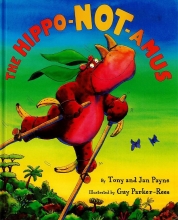
- Watching a video such as Nature's Best Camouflages (The "Where's Wally" of Nature). Discuss using questions such as:
- “What are some ways in which the animals in the video are camouflaged?” (e.g., some animals look like something else, like a dead leaf or a flower; some are coloured or are able to change colour so that they blend into their backgrounds)
- "How does camouflage help the animals in this video survive?"
- "What are some ways that humans try to imitate some animal adaptations? Why do we do these things?” (e.g., humans imitate the snowshoe hare when we use snowshoes to walk on snow; humans imitate aquatic birds when we attach swim fins to our feet to help us move through water; people in the military wear camouflage clothing to make them less visible to their enemies)
Details
- tools and materials for producing a book (e.g., paper, pencils, crayons, digital applications for writing)
- Download and print provocation picture (if using)
- Download and print pictures of animals (if using)
- Download What is an Insect? by Let's Talk Science or set up equipment to show onscreen

Students develop and apply the skills of collaboration and communication and the skills and processes of computational thinking to learn about ways in which animals are adapted to live in their environments.
Students:
- Clarify understanding of the term “adaptations”
- Educator facilitates the discussion using visuals and probing/clarifying questions.
- Listen to the book What is an Insect? and discuss how insects are adapted to live in their environments.
- Educator facilitates the discussion using photos and questions from the book, focusing on how each insect part is an adaptation.
- Discuss how the book helps their understanding of insects’ adaptations (e.g., by breaking the insect down into smaller parts – decomposition) and that these adaptations are partly what makes them identifiable as insects
- Educator wonders aloud if we could learn about other animals using the process of decomposition.
- Educator uses the pattern of the What is an Insect? book to engage in a “think aloud” about adaptations using humans as an example.
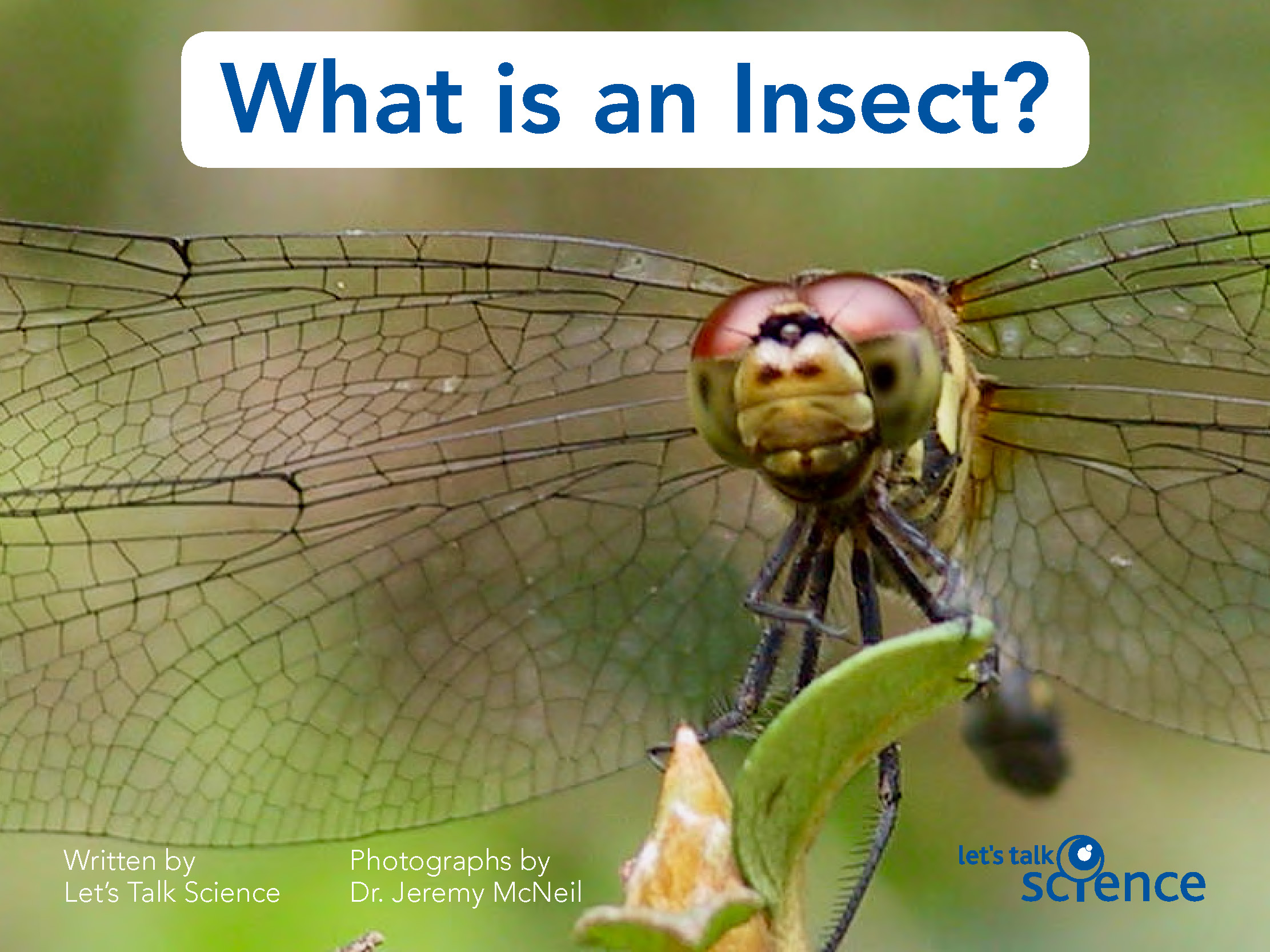
- Collaborate to pick an animal to decompose.
- The educator may wish to facilitate this by providing pictures of familiar animals for students to pick from. Pictures should include animals that have observable adaptations such as frogs, ducks, or giraffes. Students are encouraged to see how adaptations can be ways in which the animal behaves (e.g., a wasp or hornet will sting when it feels threatened), a physiological or body process (e.g., when animals hibernate their heart and breathing rates slow down and their body temperature drops) or a structural adaptation (e.g., the webbed feet of ducks and geese allow them to move quickly and easily through the water)
- Communicate their learning in a book based on What is an Insect? (e.g., organized by decomposing their animal to explain its adaptations).
Observe and document, using anecdotal comments, photos and/or video recordings, students’ ability to:
- Communicate - students use active listening strategies to understand an oral text (e.g., to acquire information about insect adaptations)
- Collaborate - students work collaboratively to complete a task (e.g., recognize and identify personal strengths (e.g., in visual arts) and acknowledge strengths and interests of others (e.g., another person’s writing abilities) when putting together their book
- Communicate - students write short texts in simple forms to communicate their thinking (e.g., students create a book to share their learning about animal adaptations)
- Communicate - students use principles of design to create art works on a theme or topic (e.g., create drawings to illustrate their book on animal adaptations)
- Use Computational Thinking Skills and Processes - students use computational thinking processes when exploring animal adaptations (e.g., the process of decomposition helps students to break an animal down into smaller segments in order to explore its adaptations).
| Students: Saying, Doing, Representing |
Educator: Interactions: Responding, Challenging |
|---|---|
| Students use active listening strategies to acquire information about insect adaptations. |
|
| Students work collaboratively to complete a task (a book) |
|
| Students write short texts in simple forms to communicate their thinking about their animal’s adaptations. |
|
| Students using principles of design to create drawings to illustrate their book on animal adaptations. |
|
| Students use the computational thinking process of decomposition to break an animal down into smaller segments in order to explore its adaptations. |
|
Literacy
- Ask questions and explore a variety of possible answers to those questions (e.g., ask questions about how animals have adapted to changes in their environment brought on by seasonal changes, and how humans mimic these adaptations)
- Identify sources of information (e.g., print and digital sources of information about animals and how they are adapted to live in their environment)
- Locate relevant information from a variety of sources (e.g., explore non-fiction texts and online web sources)
Mathematical Thinking
- Apply developing reasoning skills such as pattern recognition, classification (e.g., all humans have 1 pair of ears, 1 pair of eyes, 1 pair of arms and 1 pair of legs)
Visual Arts
- Produce two-and three-dimensional art works to communicate ideas and understandings (e.g., use illustrations to help explain animal adaptations)
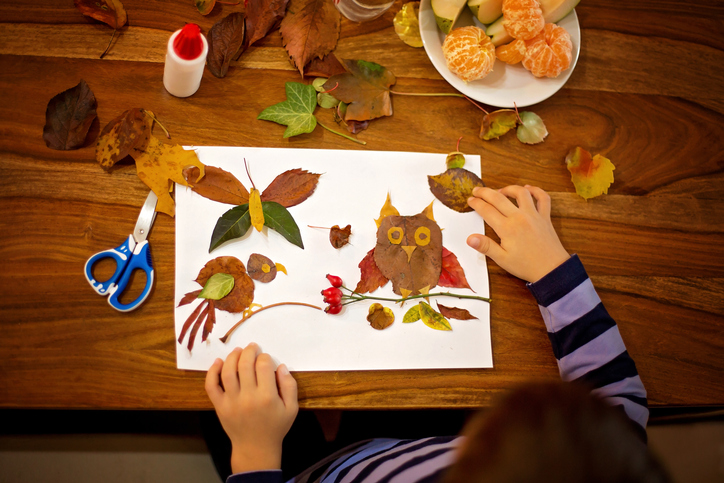
If your students are interested in learning more, the following may provoke their curiosity:
- Some students may want to explore unusual animal behaviours like the ones described in books such as Have You Ever Seen an Octopus With a Broom? or Tooling Around: Crafty Creatures and the Tools They Use, or in the Tool Use videos!
Educators can facilitate discussions with students about these behaviours and how they help animals to survive in their environment (e.g., are they a behaviour, a body process or a structural adaptation?).
- Explore other animal adaptations such as courtship, parenting and moulting in videos. Students may wish to watch videos as a starting point for exploring behaviours such as:
- Videos such as a simple way to tell insects apart and books such as A Beetle is Shy by Dianna Hutts Aston allow students to explore a particular adaptation or animal in greater detail.
Interactives
What is an Insect? (Interactive)
By Let’s Talk Science
How are insects similar to and different from humans? What makes an insect an insect? Learn about sorting & classifying, anatomy, and biodiversity while exploring the amazing world of insects in this book illustrated with beautiful photographs.
ISBN: 978-1-7753552-0-5 (English)
ISBN: 978-1-7753552-2-9 (Français)
Read the Book Online!
English (PDF)
Français (PDF)
Videos
- Nature's Best Camouflages (The "Where's Wally" of Nature) (Video via YouTube)
Furious Vegetables (2012) Video showing different creatures that are camouflaged.
Books

The Hippo-NOT-amus
By Tony and Jan Payne
A young hippopotamus who is bored with his life sets out to discover "just the right kind of animal to be."
ISBN 978-1862335141
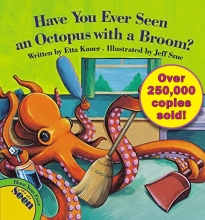
Have You Ever Seen an Octopus With a Broom?
By Etta Kaner
Have You Ever Seen an Octopus with a Broom? compares human and animal tools and reveals surprising facts about how animals clean house, fish for food and even play percussion.
ISBN 1554532477
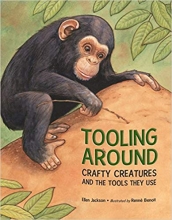
Tooling Around: Crafty Creatures and the Tools They Use
By Ellen Jackson
Simple, rhyming text introduces eleven animals and the surprising tools they use, including an octopus that hides in a coconut, a dolphin that protects its nose with a sponge, and a deer that bedecks its antlers with heaping piles of mud and grass. Secondary text offers further information about these crafty creatures.
ISBN 1580895654
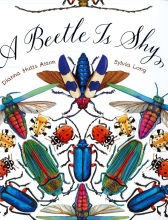
A Beetle is Shy
By Dianna Hutts Aston
From flea beetles to bombardier beetles, an incredible variety of these beloved bugs are showcased here in all their splendor.
ISBN 1452127123
Animals: Adaptation (Picture Collections)
11 images of some animals such as lizards and Arctic Hares whose appearance has adapted to provide protection in their environments
How do animals hide? (Hands-on Activities)
Play a game of hide and seek to discover how animals can hide in plain sight!
How do animals stay warm in the winter? (Hands-on Activities)
Animals have some unique adaptations to stay warm. Discover what conduction of heat and insulation have to do with staying warm!
Why are Guppies so Diverse? (STEM in Context)
Different members of a species can have different traits. You can see this in a species found at your local pet store - guppies!
How Do Trees Survive in Winter? (STEM in Context)
What adaptations and processes do trees in northern climates have to survive winter?
Materials
- tools and materials for producing a book (e.g., paper, pencils, crayons, digital applications for writing)
Preparation
- Download and print provocation picture (if using)
- Download and print pictures of animals (if using)
- Download What is an Insect? by Let's Talk Science or set up equipment to show onscreen

What to Do
Students develop and apply the skills of collaboration and communication and the skills and processes of computational thinking to learn about ways in which animals are adapted to live in their environments.
Students:
- Clarify understanding of the term “adaptations”
- Educator facilitates the discussion using visuals and probing/clarifying questions.
- Listen to the book What is an Insect? and discuss how insects are adapted to live in their environments.
- Educator facilitates the discussion using photos and questions from the book, focusing on how each insect part is an adaptation.
- Discuss how the book helps their understanding of insects’ adaptations (e.g., by breaking the insect down into smaller parts – decomposition) and that these adaptations are partly what makes them identifiable as insects
- Educator wonders aloud if we could learn about other animals using the process of decomposition.
- Educator uses the pattern of the What is an Insect? book to engage in a “think aloud” about adaptations using humans as an example.

- Collaborate to pick an animal to decompose.
- The educator may wish to facilitate this by providing pictures of familiar animals for students to pick from. Pictures should include animals that have observable adaptations such as frogs, ducks, or giraffes. Students are encouraged to see how adaptations can be ways in which the animal behaves (e.g., a wasp or hornet will sting when it feels threatened), a physiological or body process (e.g., when animals hibernate their heart and breathing rates slow down and their body temperature drops) or a structural adaptation (e.g., the webbed feet of ducks and geese allow them to move quickly and easily through the water)
- Communicate their learning in a book based on What is an Insect? (e.g., organized by decomposing their animal to explain its adaptations).
Assessment
Observe and document, using anecdotal comments, photos and/or video recordings, students’ ability to:
- Communicate - students use active listening strategies to understand an oral text (e.g., to acquire information about insect adaptations)
- Collaborate - students work collaboratively to complete a task (e.g., recognize and identify personal strengths (e.g., in visual arts) and acknowledge strengths and interests of others (e.g., another person’s writing abilities) when putting together their book
- Communicate - students write short texts in simple forms to communicate their thinking (e.g., students create a book to share their learning about animal adaptations)
- Communicate - students use principles of design to create art works on a theme or topic (e.g., create drawings to illustrate their book on animal adaptations)
- Use Computational Thinking Skills and Processes - students use computational thinking processes when exploring animal adaptations (e.g., the process of decomposition helps students to break an animal down into smaller segments in order to explore its adaptations).
Co-constructed Learning
| Students: Saying, Doing, Representing |
Educator: Interactions: Responding, Challenging |
|---|---|
| Students use active listening strategies to acquire information about insect adaptations. |
|
| Students work collaboratively to complete a task (a book) |
|
| Students write short texts in simple forms to communicate their thinking about their animal’s adaptations. |
|
| Students using principles of design to create drawings to illustrate their book on animal adaptations. |
|
| Students use the computational thinking process of decomposition to break an animal down into smaller segments in order to explore its adaptations. |
|
Cross-curricular Connections
Literacy
- Ask questions and explore a variety of possible answers to those questions (e.g., ask questions about how animals have adapted to changes in their environment brought on by seasonal changes, and how humans mimic these adaptations)
- Identify sources of information (e.g., print and digital sources of information about animals and how they are adapted to live in their environment)
- Locate relevant information from a variety of sources (e.g., explore non-fiction texts and online web sources)
Mathematical Thinking
- Apply developing reasoning skills such as pattern recognition, classification (e.g., all humans have 1 pair of ears, 1 pair of eyes, 1 pair of arms and 1 pair of legs)
Visual Arts
- Produce two-and three-dimensional art works to communicate ideas and understandings (e.g., use illustrations to help explain animal adaptations)

Extending the Learning
If your students are interested in learning more, the following may provoke their curiosity:
- Some students may want to explore unusual animal behaviours like the ones described in books such as Have You Ever Seen an Octopus With a Broom? or Tooling Around: Crafty Creatures and the Tools They Use, or in the Tool Use videos!
Educators can facilitate discussions with students about these behaviours and how they help animals to survive in their environment (e.g., are they a behaviour, a body process or a structural adaptation?).
- Explore other animal adaptations such as courtship, parenting and moulting in videos. Students may wish to watch videos as a starting point for exploring behaviours such as:
- Videos such as a simple way to tell insects apart and books such as A Beetle is Shy by Dianna Hutts Aston allow students to explore a particular adaptation or animal in greater detail.
Supporting Media
Interactives
What is an Insect? (Interactive)
By Let’s Talk Science
How are insects similar to and different from humans? What makes an insect an insect? Learn about sorting & classifying, anatomy, and biodiversity while exploring the amazing world of insects in this book illustrated with beautiful photographs.
ISBN: 978-1-7753552-0-5 (English)
ISBN: 978-1-7753552-2-9 (Français)
Read the Book Online!
English (PDF)
Français (PDF)
Videos
- Nature's Best Camouflages (The "Where's Wally" of Nature) (Video via YouTube)
Furious Vegetables (2012) Video showing different creatures that are camouflaged.
Books

The Hippo-NOT-amus
By Tony and Jan Payne
A young hippopotamus who is bored with his life sets out to discover "just the right kind of animal to be."
ISBN 978-1862335141

Have You Ever Seen an Octopus With a Broom?
By Etta Kaner
Have You Ever Seen an Octopus with a Broom? compares human and animal tools and reveals surprising facts about how animals clean house, fish for food and even play percussion.
ISBN 1554532477

Tooling Around: Crafty Creatures and the Tools They Use
By Ellen Jackson
Simple, rhyming text introduces eleven animals and the surprising tools they use, including an octopus that hides in a coconut, a dolphin that protects its nose with a sponge, and a deer that bedecks its antlers with heaping piles of mud and grass. Secondary text offers further information about these crafty creatures.
ISBN 1580895654

A Beetle is Shy
By Dianna Hutts Aston
From flea beetles to bombardier beetles, an incredible variety of these beloved bugs are showcased here in all their splendor.
ISBN 1452127123
Animals: Adaptation (Picture Collections)
11 images of some animals such as lizards and Arctic Hares whose appearance has adapted to provide protection in their environments
Learn More
How do animals hide? (Hands-on Activities)
Play a game of hide and seek to discover how animals can hide in plain sight!
How do animals stay warm in the winter? (Hands-on Activities)
Animals have some unique adaptations to stay warm. Discover what conduction of heat and insulation have to do with staying warm!
Why are Guppies so Diverse? (STEM in Context)
Different members of a species can have different traits. You can see this in a species found at your local pet store - guppies!
How Do Trees Survive in Winter? (STEM in Context)
What adaptations and processes do trees in northern climates have to survive winter?